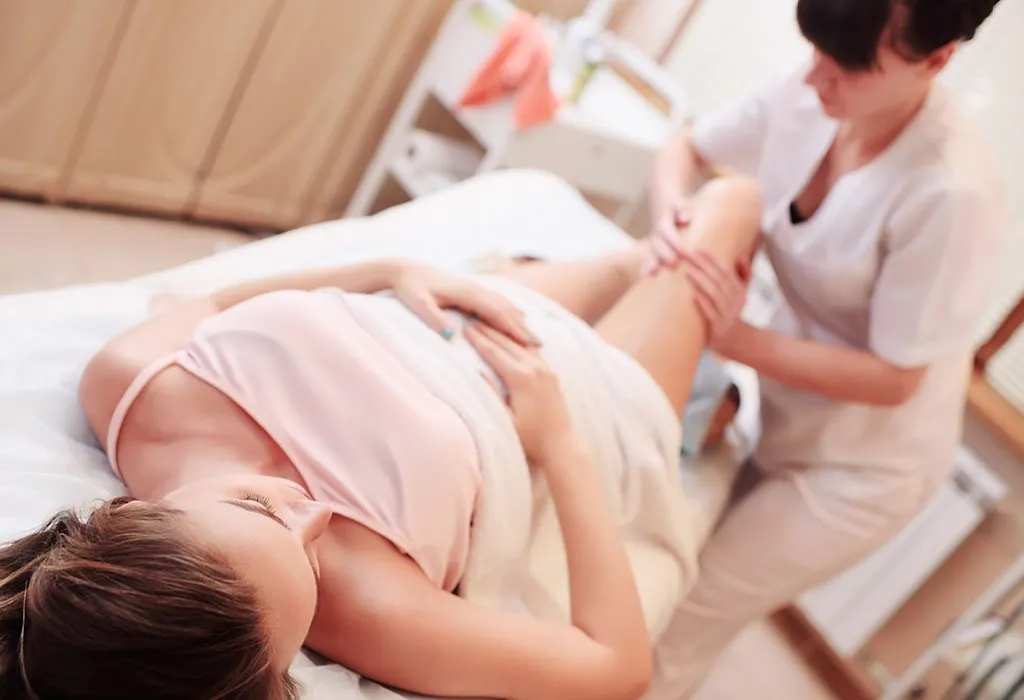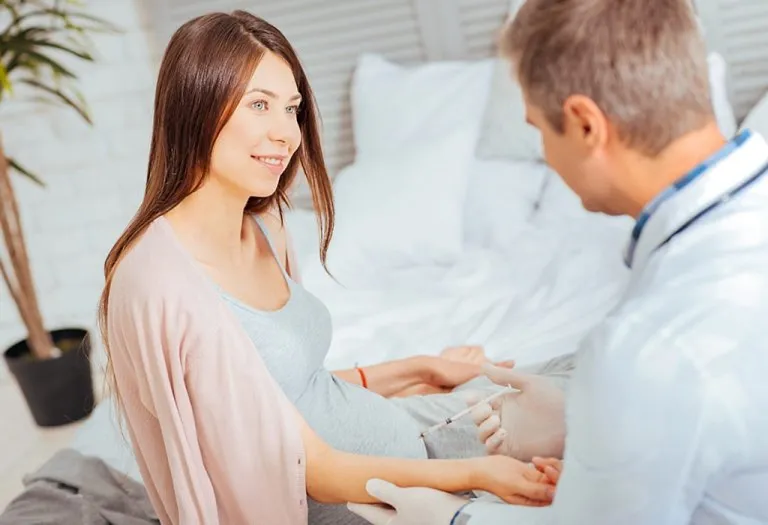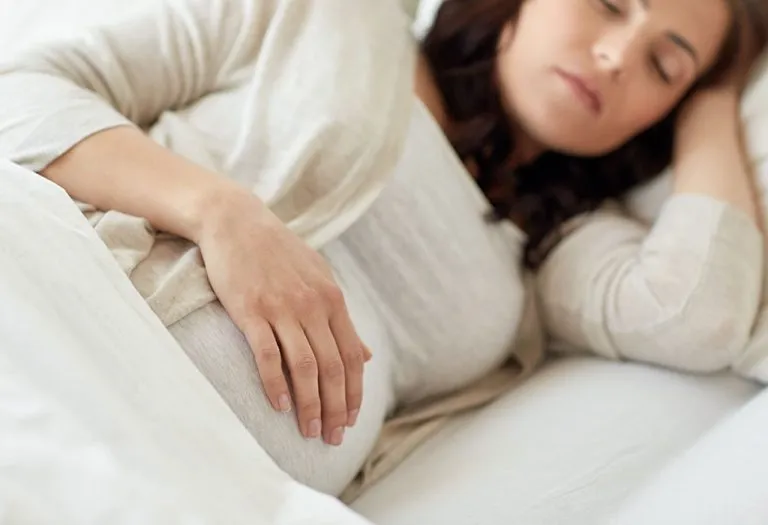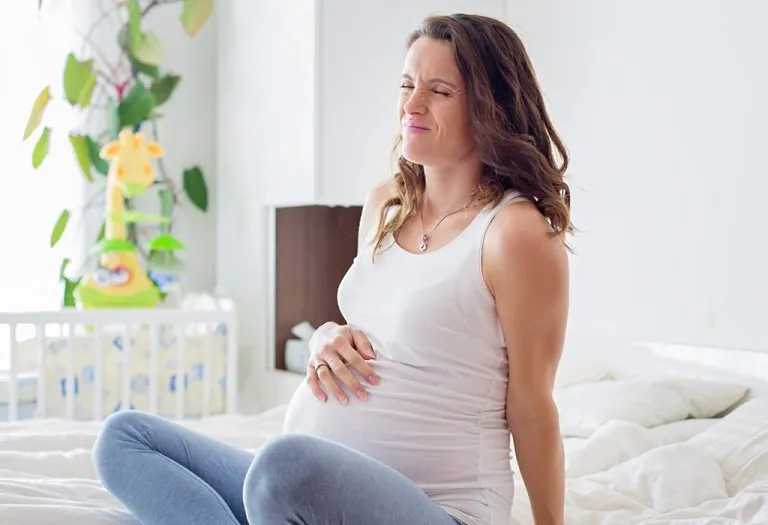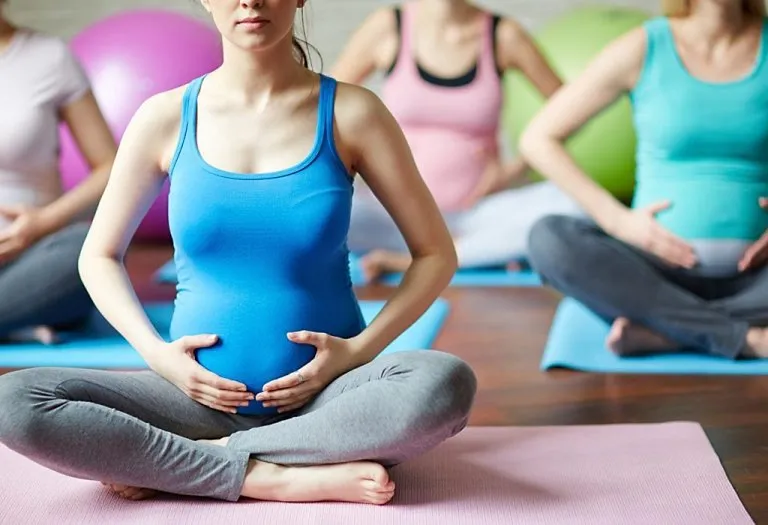Foot Massage in Pregnancy – Benefits, Risks and Safety
Foot massage can help during pregnancy, but knowing the benefits, risks, and correct ways is important.

Pregnancy not only leads to abdominal expansion but also frequently triggers swelling in the legs and feet. The discomfort associated with this swelling is a familiar experience for expectant mothers, reaching peak intensity on occasion. While applying pressure to specific points may offer relief, the allure of a soothing massage is often irresistible. Delving into the potential advantages and risks of prenatal massages becomes crucial in making an informed decision. Beyond the immediate comfort they provide, understanding the broader implications can contribute to a more comprehensive perspective on their role in maternal well-being during pregnancy. Read on to learn all about foot massages in pregnancy.
Can You Get a Foot Massage While Pregnant?
Is a foot massage safe during pregnancy? Many women wish to opt for a pedicure foot massage while pregnant and get relief from the pain, especially after knowing that there are specific massages meant for pregnant women. However, these have not been approved by any medical authority, so their benefits cannot be fully determined. Many spas do not accept pregnant women, and many doctors avoid recommending a massage therapist as well.
But a well-experienced professional performing the right kind of pregnancy massage will be safe for the mother as well as bring the necessary benefits along with it (1). These professionals undertake specialised training and certification and have the right knowledge of where to massage and which areas to avoid.
What Are the Benefits of a Pregnancy Foot Massage?
During pregnancy, women often experience various physical discomforts, and swelling in the legs and feet is a common issue. A soothing foot massage can be a tempting remedy, but understanding the benefits is essential. Below, we explore several benefits of a foot massage during pregnancy that can contribute to overall well-being.
1. Improved Circulation
A foot massage for a pregnant woman promotes better blood circulation, alleviating the swelling and discomfort caused by reduced blood flow during pregnancy.
2. Stress Reduction
Gentle massage releases endorphins, reducing the stress and anxiety of pregnancy and promoting a sense of relaxation that can positively impact both the mother and the developing baby, and promote a healthy delivery. For mothers who show signs of depression and are on medication, undertaking regular massages can help boost their mood (2).
3. Relief From Oedema
The fluid retention in a pregnant woman is higher than usual. This is further accompanied by vein compression since the growth of the uterus applies pressure on them. Massaging helps in draining excess fluids, aiding in reducing oedema, a common pregnancy symptom characterised by fluid retention and swelling (3).
4. Alleviation of Muscle Tension
Pregnancy often induces muscle tension, especially in the legs and feet. Massage helps to release tension, enhancing comfort and flexibility.
5. Enhanced Sleep Quality
Improved relaxation and reduced discomfort from a foot massage contribute to better sleep, crucial for the overall health of both the expectant mother and the baby (4).
Proper Way to Perform a Foot Massage While Pregnant
Undergoing a foot massage during pregnancy’s third trimester can bring the right benefits when done correctly. Using the right massage oil and massage technique is just as necessary. Here are a few steps your partner or caretaker can follow to perform a foot massage properly (5).
- The first step is to apply a good amount of oil to the pregnant woman’s feet and the partner’s hands. This will make it easier to massage the feet.
- Beginning from the feet, start massaging from the toes to the ankle while applying pressure. Make sure the partner’s grip isn’t too firm. Keep massaging the feet for about 5-8 minutes.
- Once that is done, move upwards from the ankle. Focus on the section from the ankle to the knee and begin massaging it. Make sure to use both hands to cover as much area of the legs and the calves as possible. Keep the pressure steady for both hands and maintain a pace of broad strokes, right from the ankle up to the knee in a single, non-stop motion. Continue doing this for about 10 minutes or so.
- Once that is done, move on to the final stage. Now, focus on the region from the knee up to the thigh. Rub a little more oil if needed to keep the area lubricated. Be a little careful in this region, but maintain a firm, steady pressure. The thigh has a larger surface area, so it is best to use two hands and alternately massage the lateral sections and then the vertical ones. This ensures you cover the entire leg and bring total relief. Continue doing this for 5-8 minutes. Then take a break before moving to the other leg.
What Are the Risks of Getting a Foot Massage During Pregnancy?
The relief from a foot massage is immense, but there are certain risks associated with foot massages. Here are some of the possible pregnancy foot massage risks that need to be kept in mind.
1. DVT
Also known as deep vein thrombosis, this is generally a result of clot formation. Mostly observed in legs, this blood clot occurs in one of the veins located deep within the leg, or even several of them. This causes the legs to swell up quite a lot, accompanied by intense pain. Many women face this only in one leg, making it easy to diagnose (6).
In such a case, a prenatal foot massage can be life-threatening. This is because any pressure on the veins could cause the blood clot to loosen from the vein walls and begin to travel through the circulatory system. On reaching the lungs, this clot could block the flow of blood and lead to various complications, including an embolism.
2. Pitting Oedema
Swelling that occurs during pregnancy is also known as oedema. This swelling is not out of the ordinary since it is usually a result of an increase in the size of the uterus as well as hormonal changes. Both of these begin to affect the veins and obstruct normal blood circulation. This is why a massage brings relief since it aids circulation by reducing swelling.
But, if the swelling tends to create a pit when pressure is applied, this is usually a sign of pitting oedema. This needs to be examined by the doctor immediately, as it could signify the presence of DVT or preeclampsia.
3. Unintentional Stimulation of Labour
Certain pressure points on the feet are associated with uterine activity. Inadvertently stimulating these points during a foot massage might induce contractions and potentially trigger premature labour, especially if the pregnancy is high-risk or nearing full term (7).
Areas to Avoid Foot Massage in Pregnancy
There are four major areas of the foot that need to be avoided while giving a foot massage to a pregnant woman (8).
- Spleen 6 Acupressure Point (SP 6): Located on the inner ankle area above the inner ankle bone, this pressure point stimulates the lower abdomen, which may not be beneficial for a pregnant woman.
- Urinary Bladder 60 (UB 60): Located behind the ankle bone on the outside, between the Achilles tendon and the main bone, this point is used primarily during labour to provide relief from pain. Therefore, take extra precautions to stay away from it.
- Urinary Bladder 67 (UB 67): Located on the baby’s toe, near the toenail, it is a popular acupressure point to stimulate contractions and get the baby in the position for delivery.
- Kidney 1 (K1): Found at the centre of the sole, directly under the ball of the foot, K1 is believed to influence the reproductive system. Stimulating this point might lead to uterine contractions, making it advisable to avoid them during pregnancy to prevent any unwanted effects on gestation.
FAQs
1. Why do your feet hurt so much when you are pregnant?
During pregnancy, the body undergoes hormonal and physiological changes that lead to increased fluid retention and weight gain. This, combined with the pressure from the growing uterus, can cause swelling and added strain on the feet. Additionally, hormonal shifts can affect ligaments and joints, contributing to discomfort and pain in the feet. A light foot massage when pregnant can help ease some of this strain and improve comfort.
2. Can you massage your swollen feet in pregnancy?
Yes, gentle massages can often provide relief for swollen feet during pregnancy. However, it’s crucial to be cautious and avoid certain pressure points that may stimulate contractions or cause other complications. Consulting with a healthcare professional and seeking the expertise of a trained prenatal massage therapist ensures the massage is safe and beneficial for the specific needs of a pregnant woman.
3. Can a foot massage actually help position my baby for birth?
While some reflexology techniques suggest specific foot points can help position the baby for birth, this is based on tradition rather than firm science and should only be attempted by a certified prenatal specialist to ensure safety.
4. Why do my feet sometimes cramp or feel worse after a pregnancy foot massage?
It can be surprising when a foot massage seems to make cramps or discomfort worse. This is often a temporary reaction because the massage releases built-up lactic acid and metabolic waste from your tense muscles into the surrounding tissue, which can briefly irritate nerves and cause cramping. Additionally, the heightened sensitivity and swelling common in pregnancy can make your feet react strongly to pressure, causing nerves to become overstimulated. This is a sign that your body may need a lighter, more gentle touch and plenty of water to help flush the system afterwards.
Foot massage is quite a wonderful way to get the necessary relaxation you need during pregnancy. Opting for a reflexology foot massage while pregnant can also be done, ensuring the areas of risk are avoided, and light pressure is used. A regular foot massage can help maintain a good mental and physical balance and relieve the stress of pregnancy, keeping you and your baby happy. Now that you’re well-armed with information about foot massage and pregnancy, go ahead and get that massage for a relaxing pregnancy journey!
Also Read:
Spa in Pregnancy
Perineal Massage During Pregnancy
Back Massage in Pregnancy
Using Massage Chairs When Pregnant
Was This Article Helpful?
Parenting is a huge responsibility, for you as a caregiver, but also for us as a parenting content platform. We understand that and take our responsibility of creating credible content seriously. FirstCry Parenting articles are written and published only after extensive research using factually sound references to deliver quality content that is accurate, validated by experts, and completely reliable. To understand how we go about creating content that is credible, read our editorial policy here.
1. Pregnancy, Birth & Baby – Complementary therapy during pregnancy
2. ResearchGate – Massage therapy effects on depressed pregnant women
6. Mayo Clinic – Deep vein thrombosis (DVT)
7. UT Southwestern Medical Center – Is massage safe during pregnancy?
8. Chiropractic Resource Organization – Atlas Of Acupuncture Points







